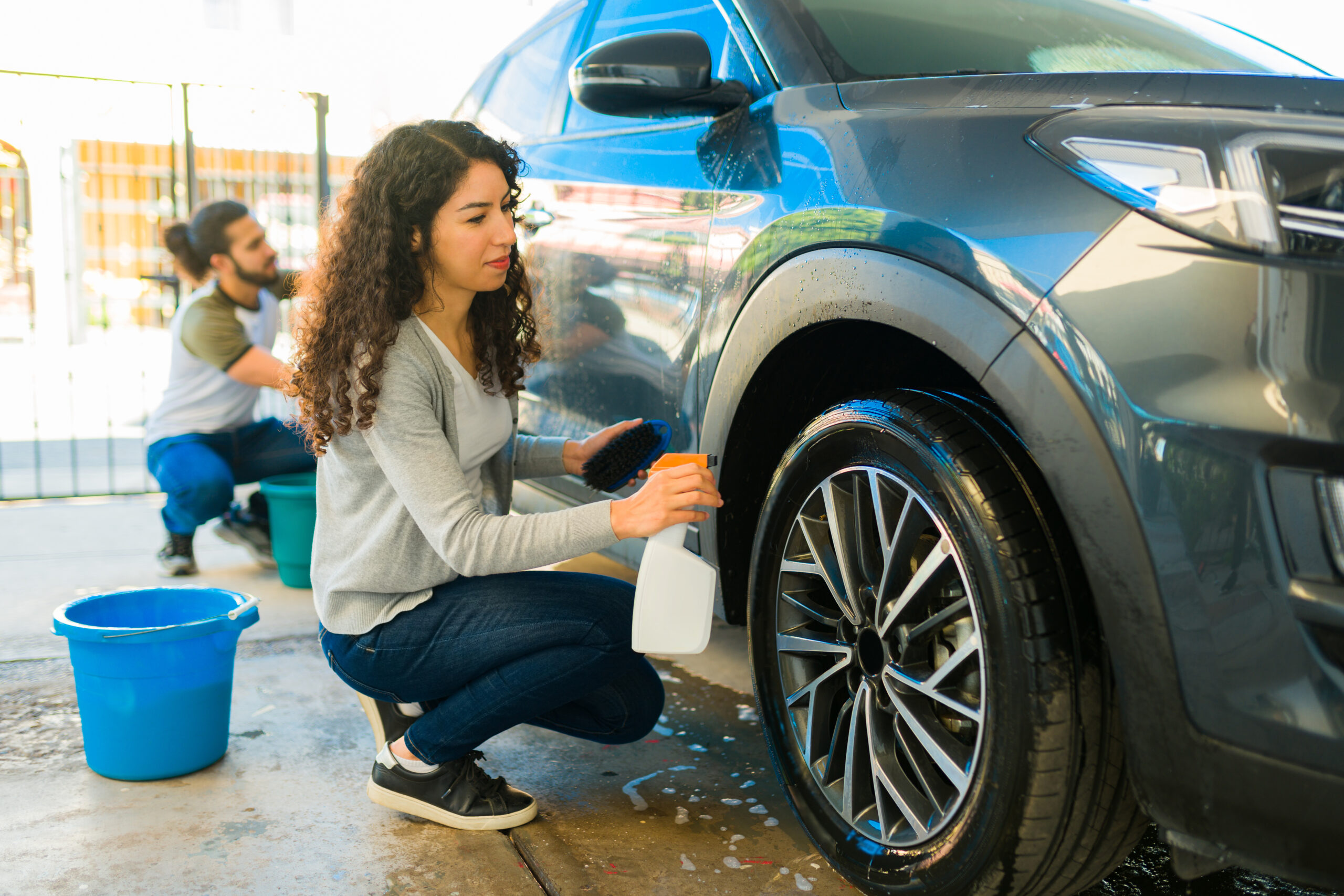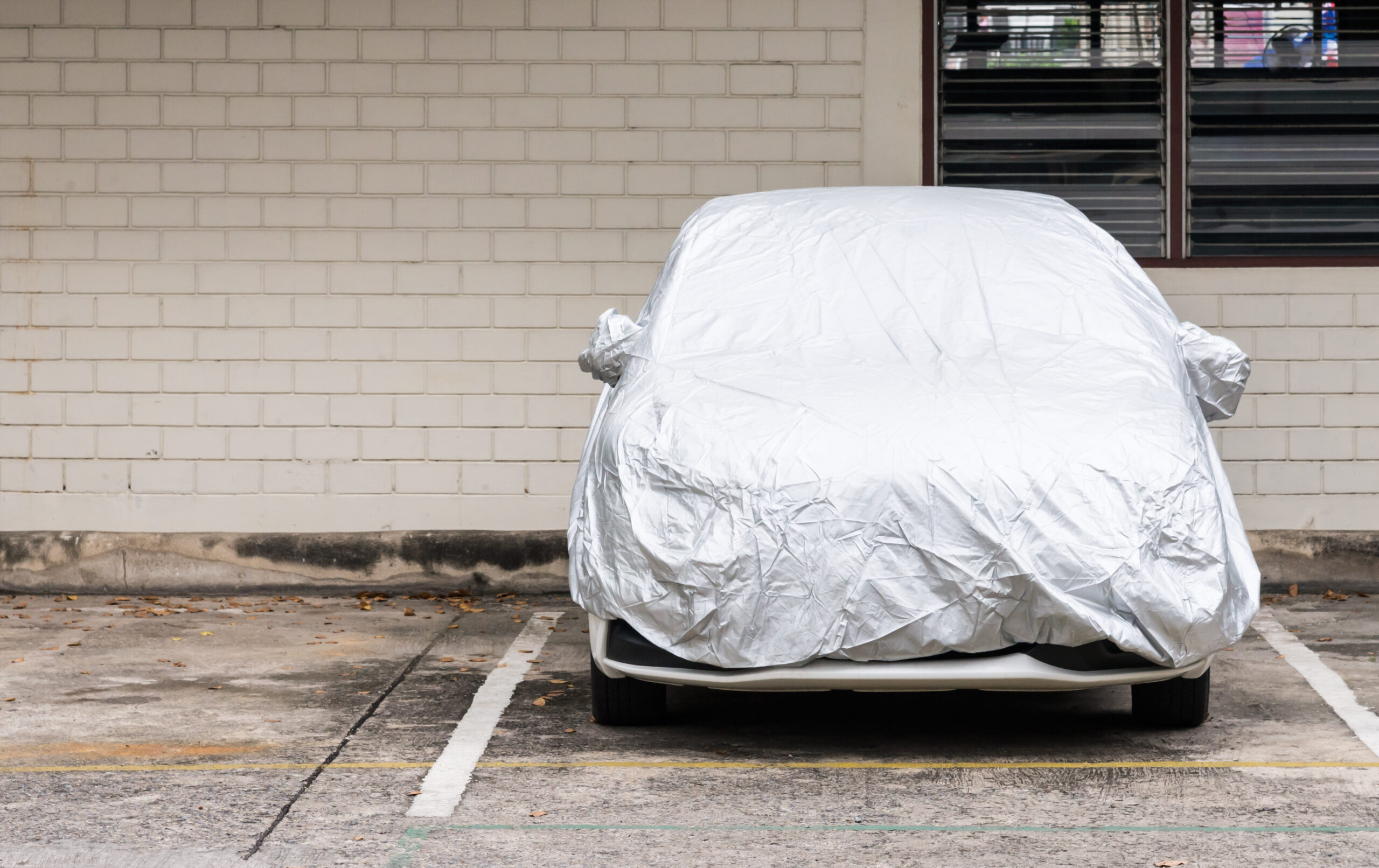Given all the things you can place in a storage unit—clothing, rugs, and even tires—the question of “Can I store a car in a storage unit?” is a natural one. As long as a car is being used regularly, storage is simple: You either park it in a garage or on the street. But what happens when you need a long-term car storage option? A vehicle is a big investment and, for car enthusiasts, a prized possession, so proper storage is important.
If you only need to store a vehicle without driving it for a month or two during a warm season, keeping your car outside won’t do much harm. However, if you’re looking to put a car away for three months or more, someplace indoors and away from the elements is the best option.
How to store a car depends on a handful of factors. How old is the car, and how long will it be in storage? What’s the climate like where you live? The answers to these and other questions will help you maintain the integrity of your vehicle when it’s not being driven.
Once you decide to store a vehicle, you can’t just simply drive up with the car as it is. There are steps to take to prep it properly. Read on to see what you need to do to store your car and keep it in good shape.
How Much Does It Cost To Store A Car?
Storing a car is not prohibitively expensive. Assuming your car is not so big that it will require one of our larger storage units, the cost of storing your vehicle will vary by location and availability. When doing pricing research, consider that a 10′ x 20′ unit is the most commonly used unit for storing cars.
Should You Cover A Car In Storage?
A car cover is a worthwhile investment to help protect the exterior of your vehicle while it’s in storage. It’s a relatively inexpensive product that will help keep dust, rain, sunlight, and other natural elements from damaging the car. Getting one made out of a breathable material is best, so avoid plastic tarps or sheets.
How Long Can You Let A Car Sit In Storage?
When it comes to how long you can let a car sit in storage, even experts don’t have a specific time frame in mind. AAA says it’s okay to store a car away for the winter without starting it, but the general consensus is not to let a car idle in storage for too long. If possible, start and drive the car a short distance once every couple of months. Driving the vehicle helps keep all the mechanical and hydraulic parts in working order. According to J.D. Power, significant issues can arise, including battery failure and tire flat-spotting.
Should I Change The Oil In My Car If It’s Been In Storage?
Experts say an oil change is needed every 5,000 to 10,000 miles, but what if the vehicle hasn’t moved since it’s been in car self-storage? Then, it all depends on when it was last changed. If you did it before placing the car in storage, you likely won’t have to. But it’d be best to bring it in if it’s been a while. You can always do a dipstick check and see if it’s clean or dirty.
Related: How to Store Tires to Prevent Dry Rotting and Extend Their Life
Storing a Car in a Storage Unit in 5 Steps
1. Determine the Storage Unit Size
The last thing you want to do is select a storage unit that’s too small for your vehicle. To ensure you rent a large enough space for your car, always measure it first—and don’t forget to include additional width for the mirrors!
- Compact cars can fit in traditional storage spaces measuring 15 feet deep or more with at least an 8 feet wide garage-style door.
- Full-size automobiles will require a minimum depth of 20 feet (10×20, 20×25, or 20×30).
2. Perform Basic Car Storage Maintenance

Before you put your vehicle into storage, do some basic maintenance to protect your investment.
- Fill the tank with premium high-octane gasoline to help prevent condensation. Having a full gas tank dramatically reduces the chances of moisture forming in the tank or lines.
- Add a fuel stabilizer, which can increase the longevity of the fuel in your tank for up to 12 months. Be sure to read any manufacturer specifications before adding.
- Remove the vehicle’s battery to prevent acids from escaping and damaging the car. Most batteries do not store well during the winter, and all batteries discharge over time.
- Change or top off the oil, brake fluid, and antifreeze before storing.
3. Protect Your Car’s Finish and Deter Pests

Many people underestimate the importance of this next step. Placing a dirty, unkempt car in storage is risky because you can damage the car’s finish or attract unwanted critters. Take the time to do the following to your car before storage.
How to prep a car for long-term storage:
- Wash and wax your vehicle. Don’t forget door jambs and underneath the hood.
- Vacuum, dust the interior, and apply a conditioner to vinyl surfaces. This will not only prevent your vinyl from drying out, but it can also help stop any foul odors from developing and deter rodents and pests from taking up residence. If you plan on steam cleaning, do so far enough in advance for the interior to dry completely.
- Give the car’s exterior a final wipe-down once it reaches its storage location. This step eliminates any last traces of dust, debris, or salt.
- Use a car cover to protect the car’s exterior finish further while in storage.
Related: 5 Tips for Seasonal and Long-Term Classic Car Storage
4. Prevent Tires From Flat Spotting
Tires can be the first thing to cause issues when storing a car for an extended period. Flat spotting occurs when a tire deflates over time due to contact with the ground. If storing a car for over a month, consider resting the vehicle on blocks, or jack stands.
The reason for jacking the car up is two-fold: It takes the strain off suspension components, slowing the aging on bushings and shocks, and it allows the tires to hold the car’s weight better, preventing those unwanted flat spots.
If you don’t have access to a jack or blocks, inflate your tires to the manufacturer’s recommended maximum air pressure before storing your car. Tires can slowly lose pressure as the temperature fluctuates and time rolls by. With that in mind, don’t exceed the maximum air pressure listed on the side of the tire. Then be sure to drive the car until it is warmed up at least once every few weeks.
5. Protect Your Car for Long-Term Storage
Now that your car is safely inside a storage unit, consider the following bonus tips to keep your vehicle in tip-top shape.
- Leave convertible tops up with the windows and vents closed. A convertible top can develop creases when folded for extended periods, especially in cold climates.
- If possible, remember to select a dark and dry storage location for your vehicle. If left out in the elements, you may find your precious ride damaged by rust, corrosion, and sun damage—not to mention critters!
- If you are storing a classic car or have been storing it for more than a year, consult with a car specialist to determine what other steps should be taken.
Storing Your Car With Life Storage
If you opt to store your car at Life Storage, you’ll have three different options: a parking space, covered outdoor parking, or an actual storage unit. Parking spaces are outside and have no walls or roofs. Select locations offer covered outdoor parking, but this isn’t a guarantee. Check with a local storage facility to see if covered outdoor parking is an option. If you choose to rent an indoor self-storage unit, you can use either of our typical 10′ x 15′ or 10′ x 20′ options as long as it has the appropriate garage-style door and access.
To get your vehicle a spot in one of our facilities, you’ll need to consider the following:
- Your vehicle must be in running condition or on a trailer.
- You must show registration and/or a title.
- Be aware that vehicle storage is taxed at a different rate in some states. The charges will be shown in the storage cost estimates.
Do I Need Climate-Controlled Vehicle Storage?
The majority of cars are stored in a non-climate-controlled environment. Life Storage does offer climate-controlled storage. However, most of these units are inaccessible by car. If you have a very expensive classic car to store, consider finding a designated showroom to keep your car in an environment with even temperature and humidity. If prices are too high, follow our storage steps above to maintain your vehicle in a non-climate-controlled unit.
How Safe Will My Vehicle Be When I’m Away?
You’re responsible for the contents of your self-storage unit, and that’s no different with a car. You will need to lock it up securely to be sure that you will be the only person with access. You can rest assured that Life Storage facilities are well-lit and well-maintained. We take the security of our customers’ property very seriously.
Is Working On A Car In A Storage Unit Allowed?
Unfortunately, working on a car in a storage unit is prohibited. Working on vehicles on-site creates issues with oil and fluid spills. Lack of electricity, noise, smoke, and odors are all factors that affect other customers. Get all engine maintenance done off-site before storing your vehicle in a storage unit.
Have you placed a car into storage before? Share your tips with us on social media at @lifestorage.
This post originally appeared on the Life Storage Blog on 4/20/18 and was revised on 5/22/23 to provide new information.







